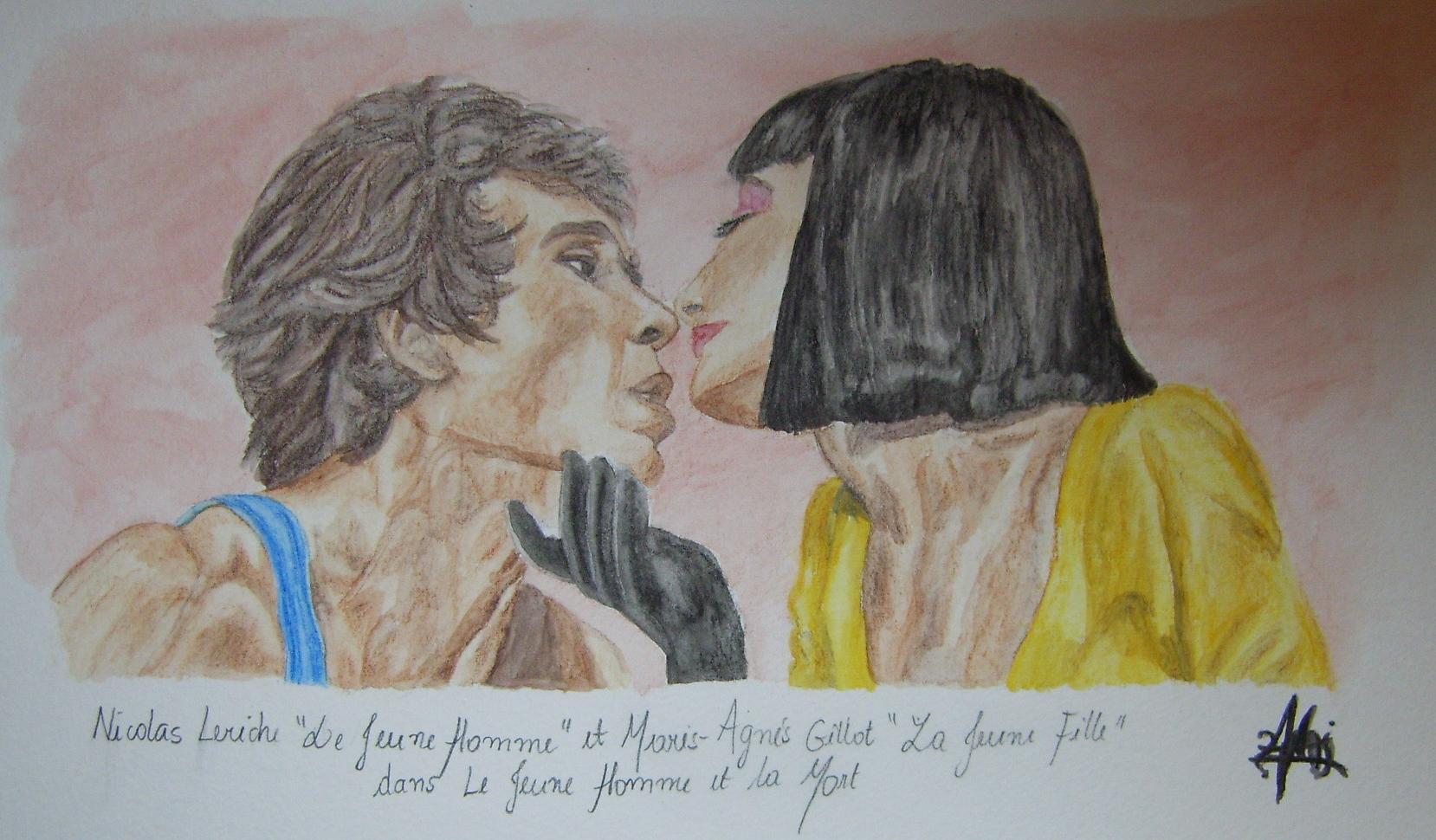Dear friends,
I have put together some excerpts from a
chapter of my book that discuss one of my favorite Ballet Masterpieces
"Le Jeune Homme et la Mort"
(The Young Man and Death)
 |
| (Drawing by: Shulamit Hochberg) |
If the princesses, knights and fairies – The main figures of the
romantic era, would have seen "The Young Man and Death", they would probably
been mesmerized by the long way that was made between the 19th century
fantasy ballets, to an art form that is so realistic a century later. They
probably would have a real hard time relaxing from the shock…
The cooperation between some of the most superb artists of their time
have brought to the world one of the most expressive neo-classical masterpieces
– a work with obvious meanings regarding emotional extremism due to unrequited
love - A kind of love that brings a man a total loss of control and practically
suicide.
The Father of The Young Man
The father of the piece is the influential French choreographer Roland
Petit (1924-2011). Trained in the Paris Opera Ballet since the
age of 8, Roland was a promising young soloist who performed most of the lead classical
roles. At a relative young age he had felt artistically unfulfilled
from only dancing classical works and so he formed his own ballet company with a vision of ballet world as being much more creative and much more
extreme...
According to the tradition of artists cooperation, set in the days of
"Les Ballet Russes" in the early 20th century, this masterpiece
was the fruit of cooperation between the Roland Petit, and Jean
Cocteau – the novelist, director, poet and Multi-Artist. The latter was the
writer of the ballet's libretto, which he described in five sentences:
"A young man is in love with a woman
He wants to tempt her, to get her
She refuses
She kicks him and leaves
He hangs himself"
With the use of the language of classical ballet, Roland was suppose to dramatize a surreal,
dark, and alienated atmosphere, a kind of drama that would reflect the general
atmosphere that was present in post war world two, in Paris of 1946.
"The Youth"
The first performer of the ballet was Jean Babilée, a dancer who was
known to have the highest leap since Vaslav
Nisjinsky. The French-Jewish dancer (originally named Jean Guttman) began a
tradition of acrobatic dancers performing this role. As a matter of fact,
"The Young Man And Death", was always a kind of a "Modern
Showcase Piece" for every classical dancer who wants to show his power in
combining Contemporary and modern qualities.
 |
| Jean Babilée & Nathalie Philippart in the first production |
The Music
Apart from the suicidal drama and the virtuoso choreography, one of the
most important elements of this masterpiece is the music – John Sebastian
Bach's "Passacaglia in C Minor". The score carries a basic tune in a
very low and dark key that keeps repeating throughout the composition. No matter
what happens around it musically, the basic dark tune remains constant in the
background, in a way that matches the basic atmosphere of the piece.
The Ballet
A common element in Petit's ballets is the use of chairs. In his famous ballet
adaptation to the opera "Carmen", we see the gypsies dancing in the
streets with chairs – a symbol that implies that they are living in the
streets. In "The Young Man and Death" the chairs are being kicked and
tossed around by the youth as a symbol for his wildness and for his scattered home
– his scattered soul.
After all his longings, the youth got what he wished for – the door
opens and there stands a woman with a horrifying yellow dress, long black
gloves and a kind of deep look in her eyes that is matchless in its cruelty.
After a sexual and twisted interaction, the woman storms out of the
room, not before she ties a rope from the ceiling, and upon the rope she points to the youth to make it of use...
And so, after a motional and emotional last storm, came the picture that
shocked the world of dance: the youth wraps the rope around his head and drops
the chair beneath his feet.
When the suffering body relinquishes the struggle, the curtain is expected
to come down, But surprisingly enough, the decor actually rises up and in the
background we see the streets of Paris. On the stage appears a horrifying figure,
"Death", in a white and red dress, and orders the young man to come off the rope. "Death" takes off his mask and we see that it was actually
the woman, who then puts its mask on the face of the youth, and sends him to
wonder the streets of Paris…
Symbols and conclusions
At first glimpse, the ending of the ballet leaves us with a little sexist
aftertaste – the woman caused the youth to end his life and apparently it was
nothing but a fraud - she was "The Grim-Reaper". Yet, a deeper
perspective might suggest a different conclusion - the possibility that
the woman was in fact an hallucination - a perspective that is supported by
artistic expressions like the costumes, the drama and even the title of the
ballet – "The Young Man And Death". In French, the last word of the title (Mort) is feminine gender, which can imply that perhaps the youth's interaction
was maybe with his beloved, but an in-depth perspective suggests that it was actually a dialogue - between the young man and death. …
The full article will be published in my book: |

אין תגובות:
הוסף רשומת תגובה